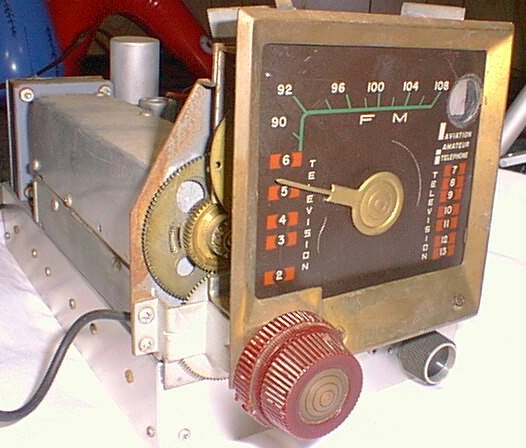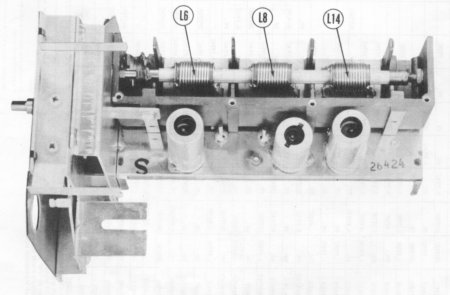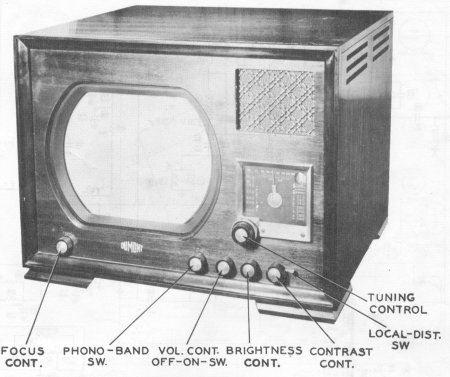Dumont RA-103

This is the front end of the Dumont set. I extracted the tuner and the IF strip. It was relatively easy in this case because the set had split sound.
Probably the coolest feature of this set was the tuner itself. It was based on the Mallory Inductuner, which was a ganged variable inductor. Without any bandswitching, the set would cover TV channels 2 thru 6, then the standard FM broadcast band, followed by aviation, Amateur 6 meters, what was once a radiotelephone band, then TV channels 7 thru 13.

Here's a picture of the tuner, which doesn't show the coils at all, but it gives an idea of the construction. There was another inductive tuner which had spiral inductors. The tuning shaft passed through the coils. Each coil had a small spring loaded arm which would ride the ridge of the coil, somewhat like a record.
Several other things about this TV were unique -
There is no discernible AGC circuit. The video IF amps, along with the mixer grid, returned to the Contrast pot, which applied varying negative voltage from the bias rectifiers.
It used a 6AL7 tube as a tuning indicator, presumably for the FM.
It uses two 6X4 rectifiers in a full-wave CT configuration to supply the B-.
It has a 6AL5 feeding a relay coil which delays the application of B+.
The B+ relay coil returns to ground through a resistor, which develops a negative bias for the horizontal circuit.
The more common features include separate filament windings for the horizontal output tube and damper, a toggle switch to reverse the vertical centering bias, DC restoration, and two sync clippers.
This baby had 30 tubes and a lot of iron, all to produce a 12 inch b/w picture.

Museum page


